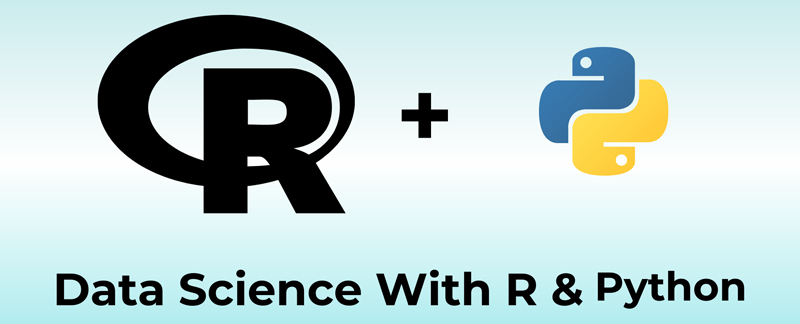Program Duration
Duration - 80 Hours
Accredited by
An ISO 9001-2015 Certified Company
Fexible Learning
In-center and online
Learn from
Industry Experts
Objective
The objective of data science using R programming is to use the R programming language to analyze, visualize, and extract insights from large and complex datasets. R is a powerful tool for data analysis, and its wide range of statistical and graphical techniques make it well-suited for a variety of data science applications.
Data manipulation and cleaning : R has a wide range of tools and packages for cleaning and manipulating data, including functions for handling missing values, transforming variables, and merging datasets.
Statistical analysis : R provides a wide range of statistical functions for analyzing and modeling data, including regression analysis, hypothesis testing, and time series analysis.
Data visualization : R has powerful graphical capabilities, allowing users to create a wide range of plots and visualizations to help explore and communicate complex data.
Machine learning : R provides a wide range of machine learning packages for tasks such as classification, clustering, and predictive modeling.
Data mining : R provides tools for mining large datasets to discover patterns, relationships, and trends.
Who Can Learn:
Data science using R is a field that can be learned by anyone who has an interest in data analysis and statistics, regardless of their background. However, some fields and backgrounds may be particularly well-suited for learning data science using R, including:
Statistics : R is widely used in the field of statistics and is often taught in undergraduate and graduate-level statistics courses.
Mathematics : R is based on the S programming language, which was developed for data analysis in the field of mathematics. As a result, people with a strong background in mathematics may find it easier to learn R.
Science : Scientists in fields such as biology, physics, and chemistry often use R for data analysis and modeling.
Business : Data science using R can also be beneficial for professionals in fields such as finance, marketing, and operations who work with large datasets and need to extract insights and make data-driven decisions.
Programming : While no prior programming experience is required to learn R, people with experience in programming may find it easier to learn R due to its syntax and structure.
Job Opportunities :
Data Analyst: A data analyst collects, processes, and performs statistical analyses on large datasets using R. They use data visualization tools to communicate insights to stakeholders.
Data Scientist : A data scientist uses R to create predictive models, perform statistical analysis, and identify trends and patterns in large datasets. They use machine learning algorithms to create predictive models that can be used for decision-making.
Business Intelligence Analyst : A business intelligence analyst collects, analyzes, and interprets large datasets to identify trends and patterns that can inform business decisions. They create dashboards and reports using R.
Research Scientist : A research scientist uses R to analyze large datasets and to identify trends and patterns in scientific research data. They use data visualization tools to communicate insights to other researchers.
Machine Learning Engineer : A machine learning engineer develops and deploys machine learning models using R. They use R packages to create algorithms that can analyze large datasets and make predictions.
Data Engineer : A data engineer is responsible for designing, building, and maintaining data infrastructure using R. They use R packages to create data pipelines and automate data processing.
Frequently Asked Questions :
1. What is R used for in data science?
R is a popular programming language used for statistical computing and graphics. In data science, R is commonly used for data manipulation, data visualization, and statistical analysis. It is also widely used in machine learning, predictive modeling, and data mining.
2. Is R difficult to learn for data science?
R can be challenging to learn for those who have no prior programming experience. However, with practice and dedication, anyone can learn R. There are many resources available online, including tutorials and courses, to help beginners learn R.
3. What are some popular R packages used in data science?
There are many popular R packages used in data science, including ggplot2 for data visualization, dplyr for data manipulation, tidyr for data cleaning, caret for machine learning, and shiny for creating interactive web applications.
4. What skills are needed for a career in data science using R?
To have a successful career in data science using R, you need a strong foundation in statistics and programming. You should also be comfortable with data visualization, data cleaning, and machine learning algorithms. Good communication skills and the ability to explain complex ideas to non-technical stakeholders are also important.
5. What types of companies hire data scientists who use R?
Many types of companies hire data scientists who use R, including tech companies, financial institutions, healthcare organizations, and government agencies. Data scientists who use R can work in various roles, such as data analyst, data scientist, machine learning engineer, and research scientist.
Course Curriculum
» Introduction to Data Science
» Basics of R programming
» Interpret Dataset with packages
» Fundamentals of statistics and Forest probability
» Data Visualization
» Data Distribution & Correlation
» Regression Analysis
» Clustering- Hierarchical & K-means
» Classification- KNN, NaTve Bayes
» Decision Tree, Random Forest
» Text Mining, WordCloud
» Forecasting/Time Series


